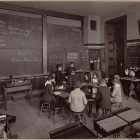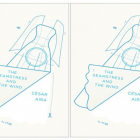The Myth of the Literary Cowboy, Part 2: Make Me a Cowboy
Last time on Myth of the Literary Cowboy, our hero was developed from the English knight as a post-Civil War appeal to nationalism, and my husband discovered I withheld pie a few years ago.
While the cowboy is inspired by the knight, however, he is his own man, one defined by characteristics that have become part of American pop culture. Dime novels and real life heroes sparked the imagination, but it was the novel of one man that gave us a literary blueprint for how to make a cowboy: Owen Wister’s The Virginian.
Made most famous by Gary Cooper on the big screen and James Drury on the small, The Virginian has numerous adaptations. The novel, written in 1902, created Westerns as we know them, taking them out of the cheap realm of pulp novels and into their own literary genre. Wister combined several Western-set short stories with elements of Arthurian literature, mixed in a romance, and seasoned it with a dash of Theodore Roosevelt, to whom the novel is dedicated.
A cowboy known only as the Virginian leads the inexperienced, unnamed narrator through the wilds of Wyoming to Judge Henry’s ranch in Sun Creek, where the story focuses on the Virginian’s life in the lawless West. The story contains all the elements we have come to expect in a Western: love, hate, revenge, friendship, action, and violence.
At the core of the story is the Virginian, who would be the literary cowboy model for decades to come. In a 1988 New York Times article, Larry McMurtry, who is the most noteworthy shaper of Western literature in the past fifty years, named himself “a critic of the myth of the cowboy.” I would agree, but I would also argue that in order to criticize, he still relies on the pattern established by Wister. (I would not, however, argue this to his face. He wore jeans to collect his Academy Award—I don’t mess with that kind of swagger.) McMurtry, Grey, McCarthy, L’Amour, and a passel of others may twist, deify, or deconstruct the cowboy, but there are some fundamentals that define their characters as cowboys thanks to Mr. Wister and his Virginian.
Mad Horse Skills
In 1956, Disney created an animated short called “A Cowboy Needs a Horse.” The song by George Bruns (which I might guess is part of Texas preschool curriculum; both my kids have learned it) begins with the film’s title, clearly pointing out the horse as rudimentary part of a cowboy’s life. This is one of those elements that harkens back to the knight; after all, neither can ride the country-side righting wrongs without a noble steed. The Virginian is even subtitled The Horseman of the Plains, and our first view of the Virginian is roping a pony with ease—after which it becomes evident that he has a special way with horses, so much so that he woos his future wife through riding lessons. Monte, his own mount, is by his side for the majority of novel.
Self-Made
The West was viewed as a land of opportunity where people could build their own destinies. Cowboys are the personification of that desire. Even if they come from wealth or status, they reject those traditions to construct their own destinies. The Virginian left home at 14 because he disagreed with his family. We know little else of his past except that he does not return to his family, as they no longer understand him. His ties to his past are irrelevant. On the merit of his skills and hard work he is made the ranch foreman. Not satisfied with life as a simple horseman, the Virginian reads works of literature, showing a preference for Shakespeare. His mind, identity, and moral code are his own to define.
Moral
Speaking of the moral code, the Virginian showcases this shining characteristic of the cowboy. Later television incarnations would amp up the white hat/black hate view of the West, but Wister presents the complex justice of cowboy morality. Perhaps one of the novel’s most profound subplots centers on the Virginian hanging a group of cattle rustlers which includes his one-time friend, Steve. Many, most notably the Virginian’s love Molly, call him a murderer. He stands by his actions and eventually the Judge supports his proceedings, arguing that in the absence of government action, people must become the enforcers. By exploring Western law in this way, Wister develops the image of the gun and the cowboy as the balance of right in the untamed (and often crooked) wilderness. The cowboy then must define justice for himself and defend right in the face of corruption.
Masculine
The West is no place for guy liner and androgyny. Like Roosevelt, the Virginian is a picture of masculinity, one who showcases leadership skills which eventually lead him to be made foreman of the Judge’s ranch. He has the respect of his fellow cowboys (who he can also joke with) and the admiration of ladies. He’s a man’s man, physically and mentally sturdy, with an equally strong moral character and stoicism. The narrator, upon viewing a collection of cowboys at the beginning of Chapter 3, notes “In their flesh our natural passions ran tumultuous; but often in their spirit sat hidden a true nobility, and often beneath its unexpected shining their figures took on heroic structure.” Which leads us to . . .
Brave
As with the knights and epic heroes, the cowboy must be brave. We know the Virginian is brave because we are told so by a dealer who claims only cowards are dangerous with guns as they’ll “always go shooting before it’s necessary.” Courageous men like the Virginian will only shoot when all else fails and never out of fear. By the time the Virginian shoots, the dealer asserts, “it’d be too late” to worry. Not only does this digression comment on the nature of the cowboy, it provides foreshadowing for the climax of the book when the Virginian does enter into a duel to defend his honor, and his enemy, a coward who has shadowed him throughout the book, has left him no other options.
Good with a Gun
Like any good hero, the Virginian must be tested by a villain. In this case that scoundrel is Trampas, who is established early in the novel as an enemy when he calls the Virginian a “son-of-a—” during a card game. The Virginian’s response, “When you call me that, smile,” sets in motion a five-year vendetta that culminates in a showdown.
The gunfight might be Wister’s most important contribution to the cowboy. To truly be a cowboy, the character must be a skilled gunfighter. Whether or not he uses those skills depends on the circumstances. But they must be present, at the ready to burn rivals when all else fails so that justice may win the day.
The cowboy is a complex individual who could warrant a whole book of analysis. These fundamentals are just the highlights of this American favorite. Tune in next time as we take a gander at the television and film cowboys who rode across the screen and into America’s hearts.



